When people hear the name Corsica, most of them think of ‘the island north of Sardinia’. This leads many to believe that “the pearl of the Mediterranean” belongs to Italy, but that’s wrong. The island has been a relatively autonomous part of France for a few centuries.
If you have the feeling that Corsica and Napoleon are somehow connected, you’re right. Napoleon Bonaparte was born in the current capital of Corsica, Ajaccio, and his birth house, memorial, and museum are all located here. The whole town is full of references to the famous ruler and there are many of his statues located all over. Nowadays, Ajaccio is the largest city on the island with around 60 thousand people, a large port, modern buildings, and its own airport.
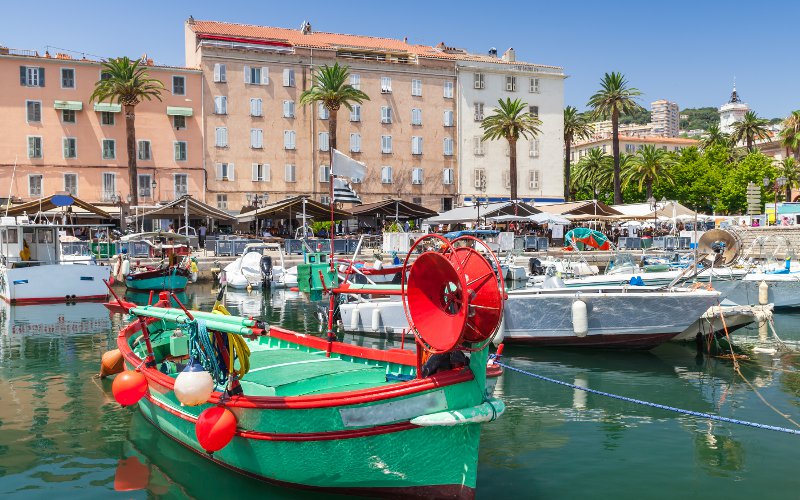
The New Babylon
It’s interesting to note that the locals pronounce the name of the town in a couple of different ways – either using the French pronunciation: [aʒaksjo] or the Italian pronunciation: [aˈjattʃo]. The name of the town comes from the Roman word adjaccium which means ‘a place of rest’. In the past, Corsica was ruled by several different nations, such as the Etruscans. Until Bonaparte’s rule, however, it was mainly the Genoese that controlled the island and they’ve also had an impact on the local language. Currently, most of the population use the Corsican language (corsu), heavily influenced by the Tuscan branch of the Italian language.

More Than Just the Sea
Many people might not know this, but Corsica is great for hiking and biking holidays. It might not seem like it, but the island offers much more than just a holiday at the sea. The 4th largest island of the Mediterranean is the most mountainous of them all. Tourists can enjoy the seaside with beautiful beaches and picturesque pier,s and then spend the next day hiking through the inland mountains.
The mountains cover most of the island. Despite being a subtropical island, some places in Corsica look like they were cut out straight from the Alps and dropped onto the island. There are 50 peaks reaching around two thousand meters above sea level. The highest point of the island is Monte Cinto with a height of 2 706 m, which makes it one of the most prominent peaks in Europe.
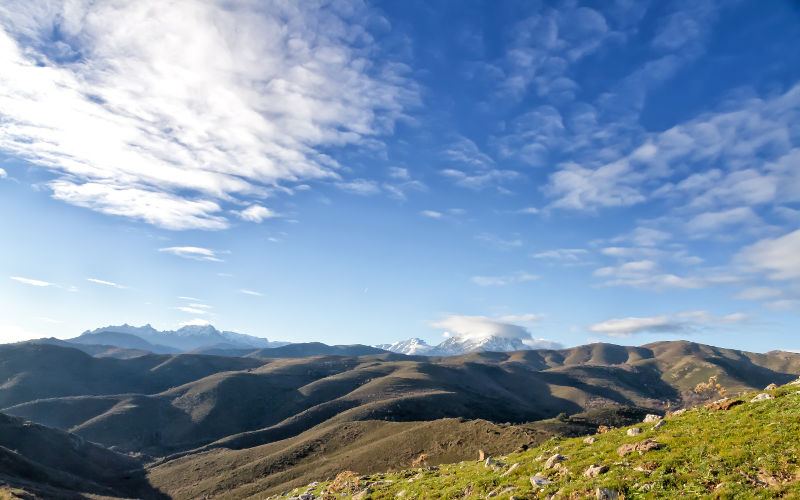
Anyone who’s interested in trekking will probably know about the famous GR 20, one the most beautiful and most difficult hiking footpaths in Europe. After you finish this 180 km long trek, you can enjoy a lot of rest on the many white and golden beaches of Corsica.
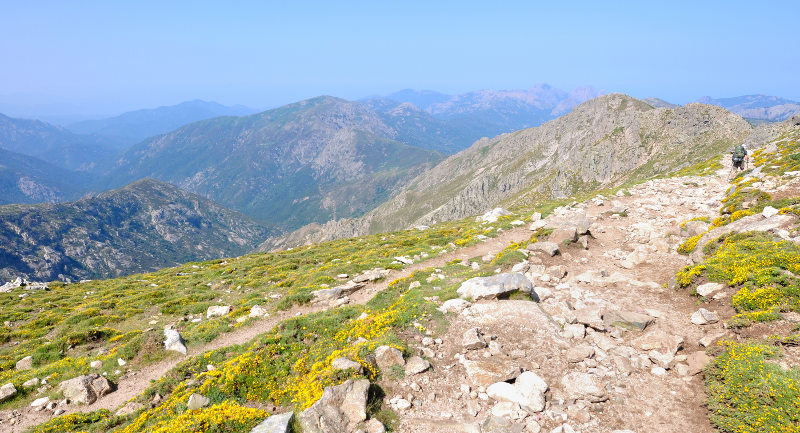
How to Get to Corsica?
On our visit, we chose a rather complicated but interesting way to get there – we went by train and by ship. The good news is that currently (February 2017), the Austrian ÖBB Nightjet offers Vienna – Livorno train tickets for 39€ per person. If you’re planning to travel by train, however, you should always make preparations and plan your trip a good while in advance, else you’re very likely to overpay for the tickets.
Going by car and then taking a ferry is still the best alternative. The Livorno – Bastia ferry will transport both you and your car for a fair price. During the month of July, 4 adults with a single car (without a trailer) would pay 250 – 320 euros per ferry ride. Of course, the definitive price depends on many other factors, such as the brand of car or the time of departure. The ferry ride is around 4 hours long, but the time will pass very quickly because there are many activities you can do on board. You can spend your time sunbathing or you can have a drink. Some ferries even have small swimming pools you can enjoy.
Having a car is a big advantage on the island. Trains and buses are not the most reliable in Corsica and they may hold you back. For example, at the end of our trip, we met two girls who wanted to see the entire island. They also arrived in Corsica by ferry but they didn’t have a car. Their plan to travel around the island was ruined thanks to a strike, which stopped most transportation. This only shows that it’s really a good idea to bring a car (or to have a friend there, which was our case 🙂 ).
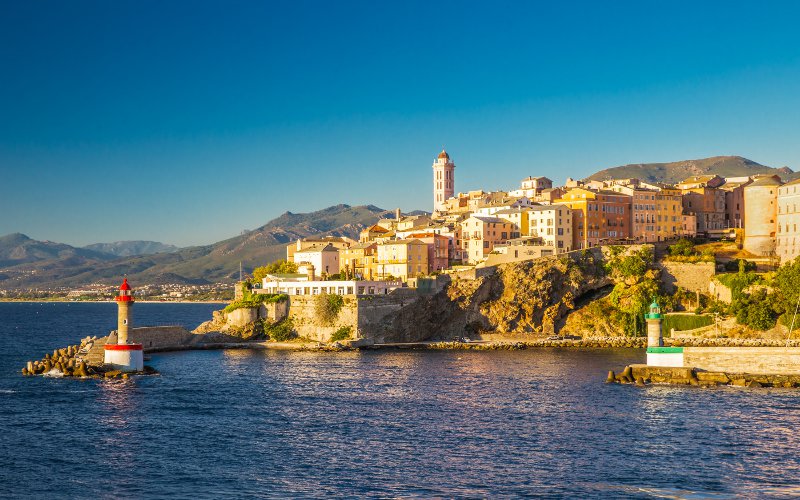
On the Coast and Inland
The ferry will take you to Bastia, a town in the Haute-Corse (Upper Corsica), which is an important port on the eastern side of the island. In town, you can find gorgeous historical areas, the huge Saint-Nicolas Square, and many calm steep streets which offer serene views of the ocean. If you’re ever in Bastia, you should try the Cap Corse Mattei, an apéritif made from Muscat wine and a plant called Cinchona officinalis. The recipe is over 100 years old.
Between Ajaccio and Bastia, in the heart of the mountains, you can find the town of Corte. It’s only reachable by steep mountain roads that connect the small high-altitude villages. Once you get there, though, you’ll feel like you’re in a travel movie.
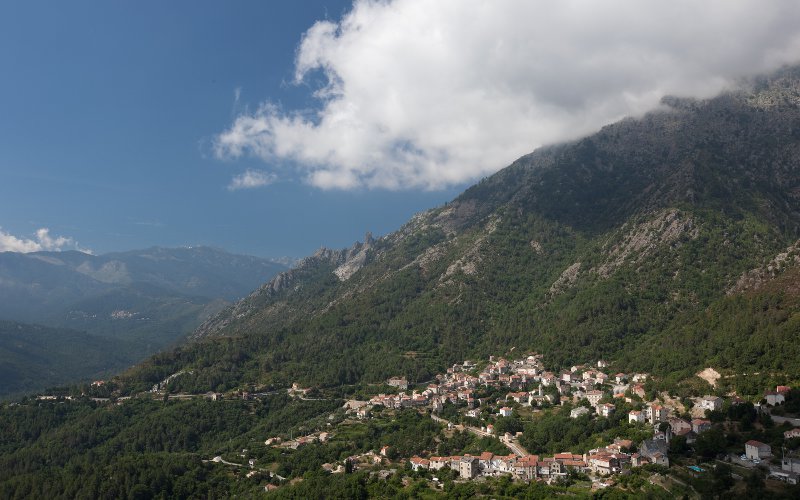
Corte is perhaps best known for The Fortress of Corte (Citadelle de Corte), located on a rocky promontory. Today it’s home to a modern museum. The town itself feels as if time had stopped here long ago. The old buildings are hidden among the dense trees and create a mysterious atmosphere. We were pretty surprised to find out that the only university on the entire island is located here and with good reason. Corte used to be the capital of the island and many locals still think of it this way – you could say it still unofficially holds its former status. In the 18th Century, the first democratic constitution was put together here. Who would have thought?
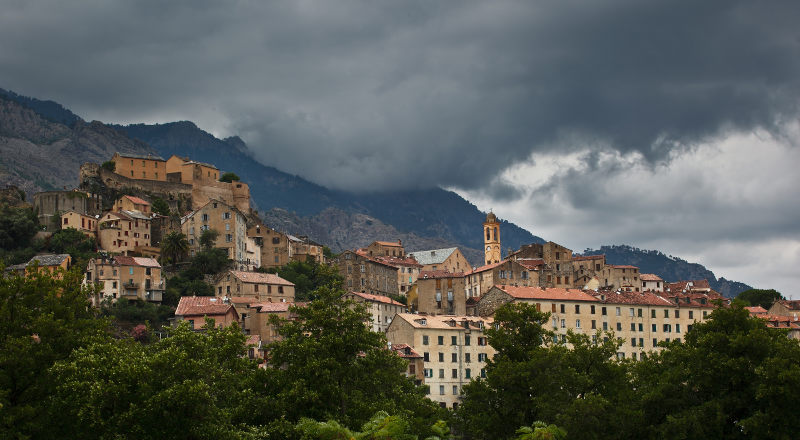
A Pirates’ Island
If you travel to Corsica, be ready for an increase in prices. Prices are a bit higher than on the mainland because this part of France gets its income mainly from agriculture and tourism. Though, tourism isn’t as advanced here as, for example, in south Sardinia. Don’t expect to find huge hotels and resorts. The people of Corsica are nice and friendly but they also like their peace and quiet. They’ll allow you to explore the country without many annoying commercial stops.
Of course, there are souvenir shops and we couldn’t leave without a little souvenir. Mugs and other items with the Moor’s head reminds everyone that in the past, the locals were often a target for Saracenian pirates. These attacks were so dangerous that the knights who managed to stop them got the honor to use the Moor’s head as their coat of arms. To this day, the symbol represents a victory against the enemy.
Beach Adventures
Camping at tourist campsites is probably the best option, at least when money is concerned. On our trip, we liked the fact that there weren’t many people on the beaches. We stayed in a very high-population area of the island, the Moriani-Plage. It’s a great place to go if you like having a lot of people around. In the mornings, however, the beach we would go to was almost entirely empty 🙂
In the south and the west of the island, there are many calm lagoons where you can enjoy some peace and quiet. If you head towards the town of Porto-Vecchio, you can’t miss the Palombiaggia beach. It’s one of the most popular beaches and you can find it on many postcards and smartphone photos. A disadvantage is that it’s usually completely full of people.
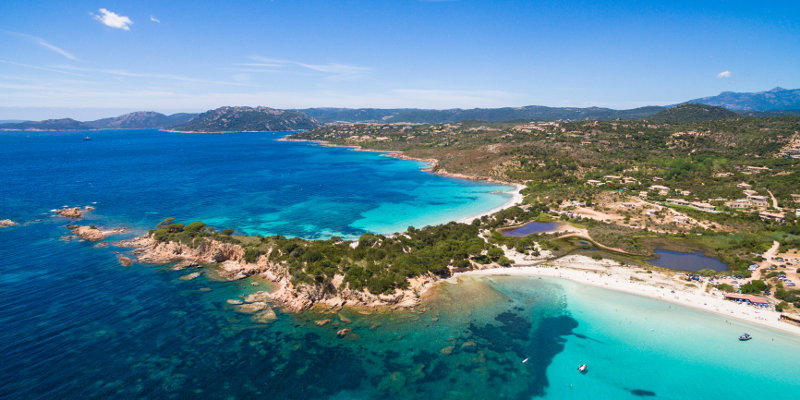
The Campomoro, Santa Giulia, and Rondinaria beaches are among the most popular and very child-friendly. If you’re looking for something unique and also want to avoid too many tourists, you should definitely go see the Bay of Figari near the Pianotolli village. The beach has many small creeks running through it, creating a truly wonderful sight. The Plage de Loto is among the most beautiful beaches in Corsica but it lacks services for tourists.
The Town on a Cliff
If you decide to visit Corsica, you should not skip a visit to Bonifacio, a town on the southernmost edge of the island. It’s built on limestone cliffs that overlook the vast sea. From its walls, you can see all the way to the coast of Sardinia. The terrain narrows down into a gulf, similar to a fjord, where you can find the local harbor facilities (La Marine). Thanks to the unique appearance of the town, many assume that the ancient Greek author, Homer, wrote about it in his famous Oddysey. In it, he mentions the Laestrygonians, man-eating giants. They lived in the city of Telepylos, which was described as surrounded by steep cliffs and only accessible through a narrow canal – exactly the same as Bonifacio!
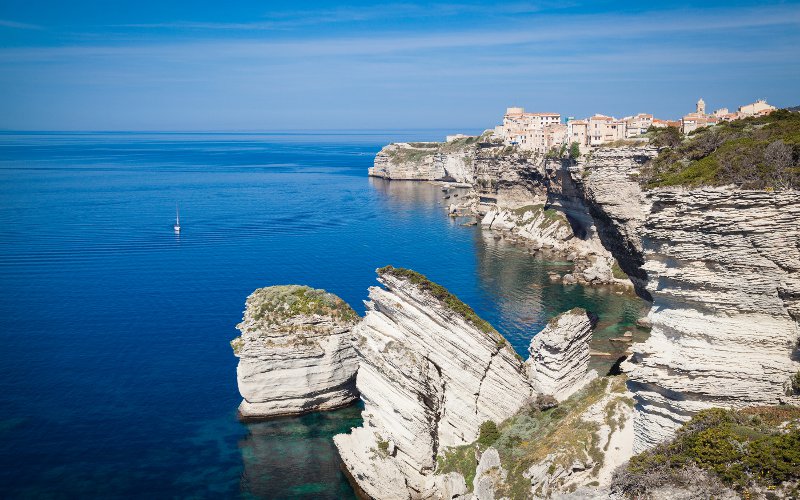
If you want to go see Haute Ville, the medieval part of Bonifacio, you’ll have to be in good shape because it’s only reachable by climbing a lot of stairs. You’ll find many narrow streets and vendors with local goods, as well as an old cemetery which resembles a town within a town, due to its many mausoleums.
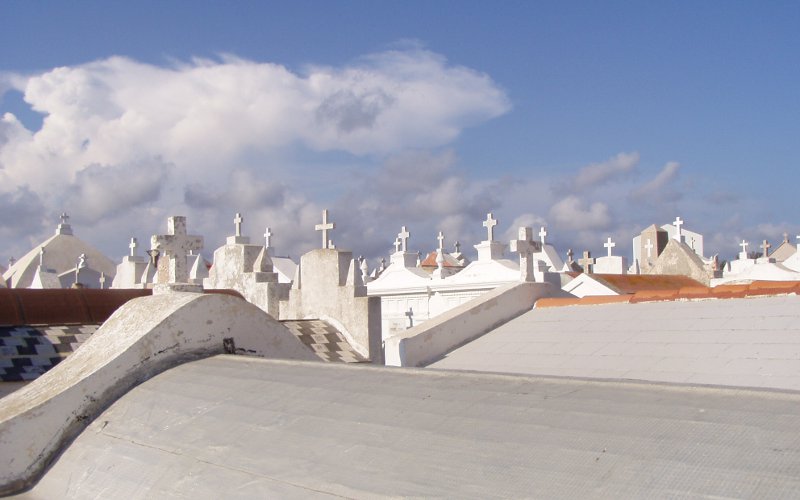
Cheese Ice Cream and Chestnut Beer
Of course, no travel guide is complete without mentioning food. Corsica is a good place for chestnuts and the locals use them for almost every kind of food – chestnut flour is used for cakes and other kinds of pastry, the locals make chestnut jam, spirits, and also beer (Pietra). The local honey has a distinct taste of macchia, a type of wild evergreen bush. Brocciu, a local fresh cheese also tastes amazing. It’s used to make the fiadone dessert, as well as other innumerable dishes, such as ice cream.
Meat lovers will enjoy the local smoked pork and boar meat delicacies. It’s good to try these foods between November and April, though, because this is the season when they are served from fresh ingredients. Of course, we can’t forget seafood. Surprisingly, the best oysters and mussels aren’t served on the coast. you can find them in the restaurant located at the Étang de Diane, a small lake in the town of Aléria.
If you ever decide to visit Corsica, we wish you a pleasant journey.